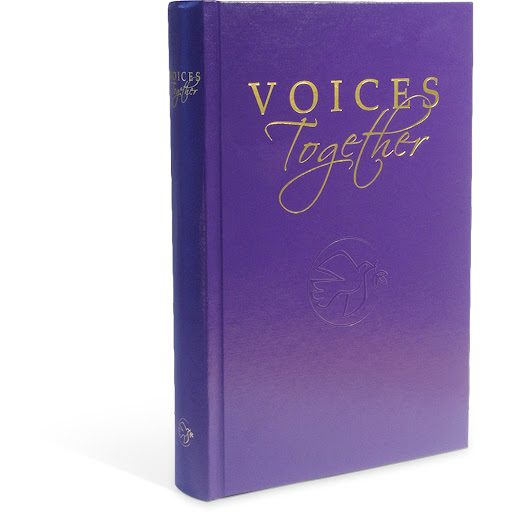Environmental Expressions in Mennonite Hymnals: An Analysis
This website provides explanation and further resources for Joseph Harder’s forthcoming essay on environment in hymnals. The essay investigates the texts of each hymn in the ten official hymnals published by MCUSA/MCCanada and their antecedents, the Mennonite Church and General Conference. Each hymn was investigated in search of metaphors and images drawing material from the natural world, and organized into four categories: material-spiritual dualism, Romanticism, agrarianism, and ethics/justice. This data was then arranged to establish a history of Mennonite eco-hymnody for use in critiquing the environmental expressions of the 2020 Voices Together hymnal.
This website adds onto that research by offering a list of hymns from each hymnal that fall into each of the aforementioned categories, and breaks the categories down further into numerous sub-types. It also offers re-wordings of some elements of the essay, and provides resources for worship leaders seeking a way to investigate the environmental expressions of hymns sung by their respective congregations.

Site Map
This site is divided into a handful of thematic pages. This home page offers an introduction to some of the ideas that went into my analysis. The “Hymnal Data” page digs into each individual hymnal I analyzed, breaks them into four distinct varieties of environmental imagery, and provides hymn a plethora of hymn texts that fit into each. A “Worship Leader Resources” page is in the works, which will primarily consist of a list of environmentally positive hymns, as well as questions for worship leaders to ask in their process of hymn selection to assess the environmental statements made in their hymns.
Hymns and Theology
To understand the relationship between theology and hymns, it will be helpful to first define precisely what a hymn is. The Hymn Society of America defines the Christian hymn as “a lyric poem, reverently and devotionally conceived, which is designed to be sung and which expresses the worshipper’s attitude toward God or God’s purposes in human life. It should be simple and metrical in form, genuinely emotional, poetic and literary in style, spiritual in quality, and in its ideas so direct and so immediately apparent as to unify a congregation while singing it.”[1] This definition lays out some helpful landmarks of a hymn – simplicity in form, sensuousness in spiritual affect, and passion in performance – but presents some problems as well. What does it mean for a hymn to be “genuinely emotional”? Who decides? If unity is a product of clarity of thought crystallized within hymns, where does this lead with potentially controversial issues such as environmentalism? Can hymns function to unify the thought of a congregation on social issues? These questions highlight the importance of investigating the modality of ethics in the texts of hymns.
Much work on music and ethics has focused on the ways which ethics can be baked into the sound of music itself , often explicitly noting that lyrics are not the basis of ethics in music. For example, Janet Wolff is quoted in Marcel Cobussen and Nanette Nielsen’s book Music and Ethics as saying that “the meaning of non-representational art forms like music cannot be grasped by analyses which focus mainly on textual components.”[2] However, hymns are distinct from most other musical forms in that their texts provide a direct call to ethics. They are, in a sense, the ‘lay person’s theology’ – they provide theological ideas in an accessible creedal format. Sing With Understanding, an introductory book on the basics of Christian hymnology, states this in the following way:
The basic beliefs of most Christians have been formulated more by the hymns they sing than by the preaching they hear or the Bible study they pursue. Certainly one’s disposition toward, or away from right belief is subtly but indelibly influenced by the hymns one repeatedly sings. And when talking about the faith, average churchgoers can quote more stanzas of hymns than they can verses of Scripture. This fact, far from lessening the importance of preaching and Bible teaching, is simply a testimony to the importance of the hymnal as a practical textbook in doctrine.[3]
In short, the singing of hymns is effectually a performance of theology. The hymns a congregation sings capture the theological thought of the people of the church, not solely of religious scholars. Hymnals, then, are markers of the popular thought of the church throughout history. The mix of new, theologically relevant hymns and old ‘heart songs’ sung in many churches is analogous to the theology of the church: it is not unified at any given point, as traditional ideas linger and flavor the ways that the church interprets and integrates new theologies.
A good analogue to the practical theological role of hymnals is the More-With-Less Cookbook, a book that emerged as a response to the global food crisis of the 1970s and has been cited for its influence on Mennonite ethics of consumption. The cookbook is simultaneously reflective of existing Mennonite theology (it builds its philosophy of frugality and sustainability upon traditional Mennonite values), and created new theology (it provided a new interpretation of existing Mennonite values that pushed for a new understanding of the world and its resources). In this way, More-with-Less offered a sort of practical theology: by learning to cook in a new way, Mennonites could reshape their theology and ethics.
This very same practicality is the key to why it is important for us to investigate the use of environmental images and metaphors in our hymnals. Through crafting the way the natural world is expressed in our hymnals, we play a role in shaping the view the church holds towards the natural world. Katie J. Graber , in her essay in Sound in the Land, a collection of essays on Mennonite music , quotes historian Paul Gilroy’s explication of the overlap between, as the author puts it, “musical performance and identity performance:”
[Identity] is lived as a coherent (if not always stable) experiential sense of self. Though this identity is often felt to be natural and spontaneous, it remains the outcome of practical activity: language, gesture, bodily significations, desires. These significations are condensed in musical performance.[4]
What we sing is important because we wrap it into our individual and cultural identities. This is evident in looking at our history: hymns have historically played a prominent role in the shaping and spreading of the church. Many of the early Christian hymns were written as perspectives on various theological controversies; Katie Graber’s aforementioned essay states that these hymns were creeds for this reason. Some suggest that the hymns born of controversy endure a theological proving ground – the hymns that catch people’s fancy and survive the test of time become viewed as near-universal expressions of what it means to be Christian.[5] Hymns which are deemed unsavory for any variety of reasons, both sonic and theological, are unlikely to become widespread and maintain a foothold in the church. In this way, the tune of a hymn is important in that it functions as a sort of mnemonic device; it catches people’s ears, and in becoming embedded in their minds keeps the hymn text similarly embedded. A text cannot very well be ‘catchy’ on its own. A good tune is also the key to getting people to develop an emotional connection to a hymn. However, as I have already mentioned, the text is the location of the more tangible theology of hymns, which is why this paper focuses on textual analysis.
A new hymnal is a creedal statement to an even greater degree: it is a concrete expression by a committee on both the direction the church is taking and , on some level, the committee’s opinion on the direction the church should be taking. The choice of hymns for inclusion in each hymnal is a statement of what new theological ideas the church wants to engage, as well as what old ideas are being held onto. This raises a difficult set of questions: how can a hymnal be unified and still appeal to the theological breadth of the church? How can a hymnal shape the church’s perception of the natural world in a way that leads to a healthy environmental ethic without being one-sided in its presentation of the natural world? On the one hand, a hymnal representing a diverse church cannot have unified theological thought, but on the other hand, it is ethically complicated for a hymnal to hold hymns with conflicting valuations of the natural world.
In order to investigate the presentation of the natural world in hymns, it is necessary to introduce another facet of hymns: their function as poetry . Hymns follow many of the traditional rhetorical devices and figures of speech that shape classical poetry, including, perhaps most importantly, metaphor. In the context of environmental expression, a great many hymns depict the natural world, but very few are using these images of the natural world to depict the natural world itself. Many hymns use the natural world as metaphor for the human experience or for attributes of God.
Despite not focusing literally on the natural world, the use of the natural world for metaphors regardless applies positive and negative associations to aspects of nature that influence environmental ethics. Metaphorical language can shape our perception of the item or idea functioning as the vehicle for metaphor, and from there shape the way we relate to said item. While explicitly environmental hymns are of course important in their statements and influences on ethics, less outwardly environmental hymns still hold charged natural imagery and suggested perceptions and relationships to the natural world. Therefore, any hymn that references or depicts nature can hold enviro-ethical influence.
About the Author
Joseph Harder is a writer and musician with a life-long passion for environmental work. A 2020 graduate from EMU, Joseph devoted significant energy during his time there to studying the environment through both independent and curricular learning, incorporating a semester at the Oregon Extension and a cross-cultural program in India into his education. Joseph was a 2020-2021 Climate Futures Fellow with CSCS, and has since continued his work with them in the position of Program Assistant.

Footnotes
[1] Harry Eskew, Hugh T MacElrath, and Charles Massey, “Sing with understanding: An introduction to Christian hymnology,” (1980): 7.
[2] Anthony Gritten, “Music and Ethics. By Marcel Cobussen and Nanette Nielsen,” (Oxford University Press, 2013), 22.
[3] Eskew, MacElrath, and Massey, “Sing with understanding: An introduction to Christian hymnology,” 59.
[4] Maureen and Weaver Epp, Carol Ann, ed., Sound in the Land: Essays on Mennonite Music (2012), 67.
[5] Epp, Sound in the Land: Essays on Mennonite Music, 61.

